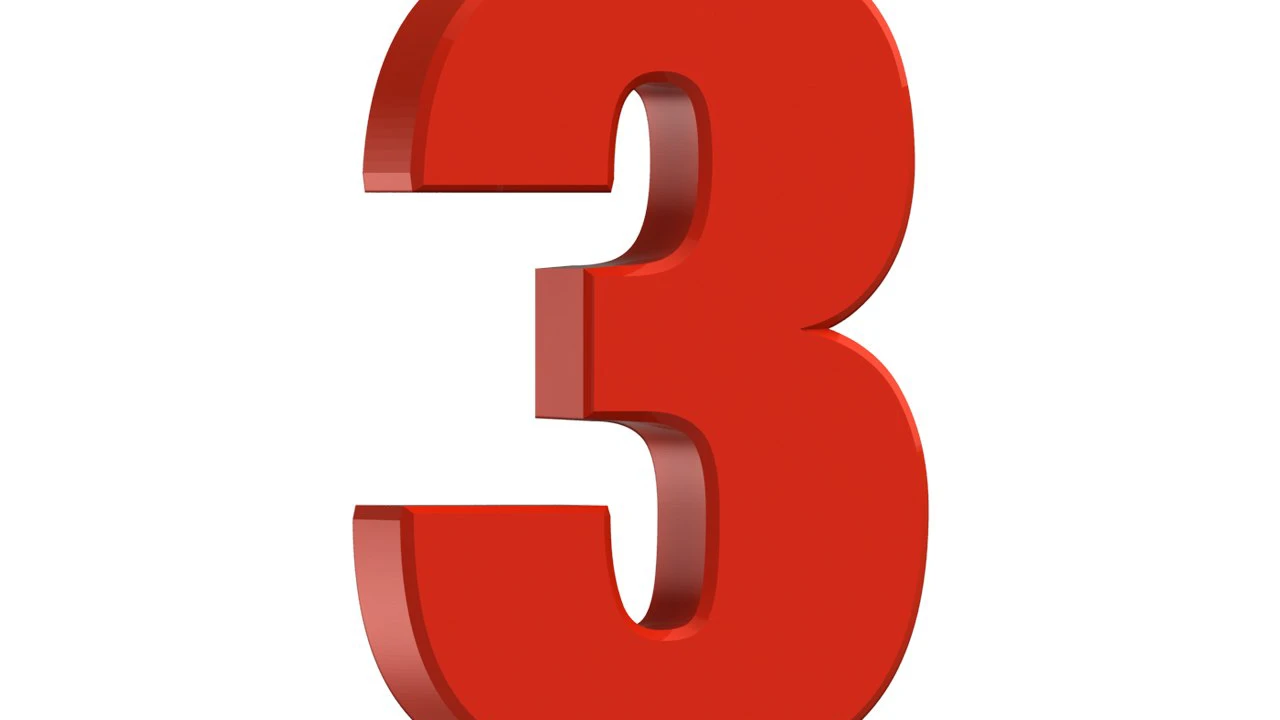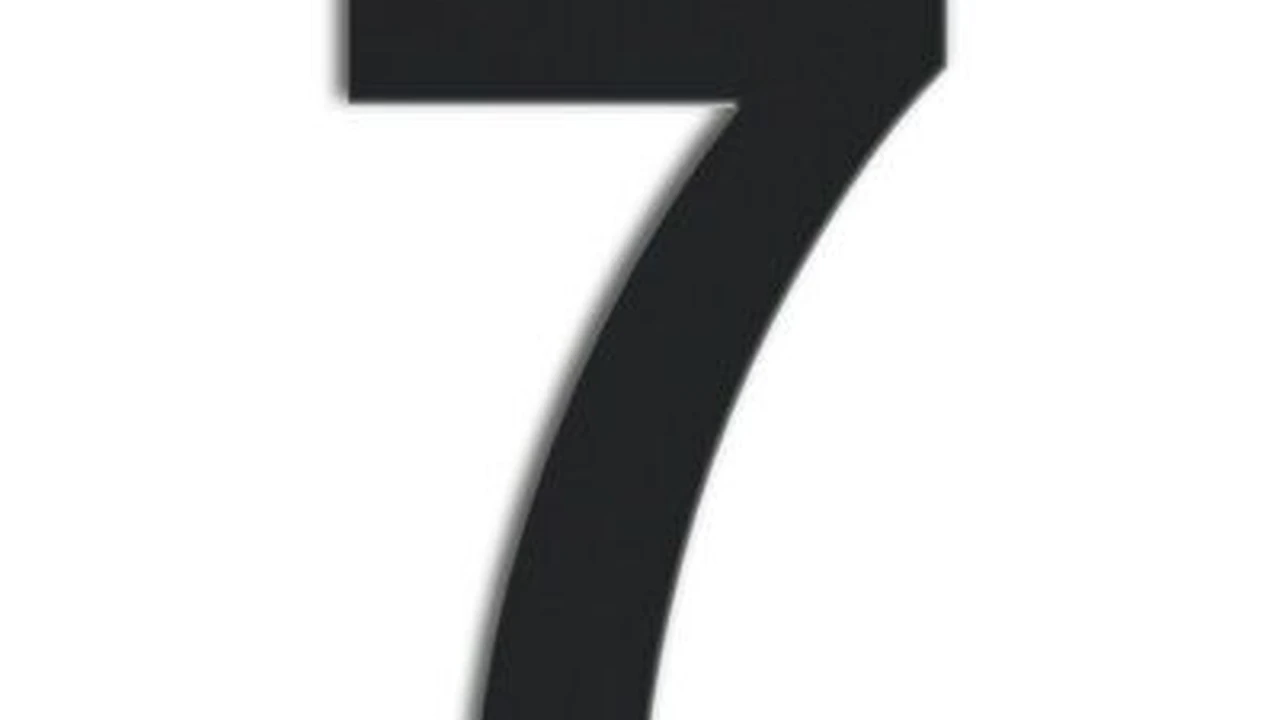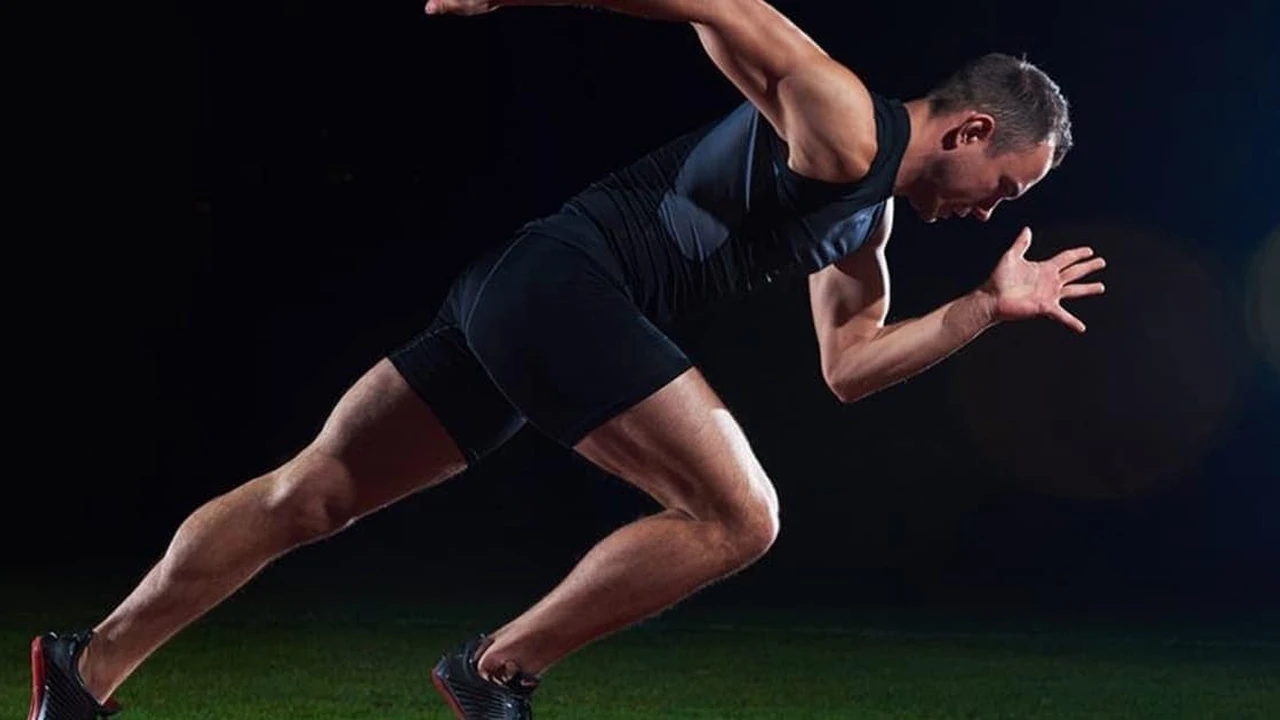3 Essential Strategies for Adapting to Humidity
Master adaptation to high humidity with these three essential strategies. Optimize your comfort and health in humid climates.

3 Essential Strategies for Adapting to Humidity: Your Ultimate Guide to Comfort and Health
Living in a humid climate can feel like a constant battle against stickiness, sweat, and a general sense of discomfort. Whether you're in a tropical paradise, a coastal city, or just experiencing a particularly muggy summer, high humidity doesn't just make you feel clammy; it can impact your health, sleep, and even your home. But don't despair! Adapting to humidity isn't about moving to a desert; it's about understanding how humidity affects your body and environment, and then implementing smart, biohacking-inspired strategies to thrive. This comprehensive guide will dive deep into three essential strategies, offering practical advice, product recommendations, and comparisons to help you master the art of living comfortably in high humidity.
Understanding Humidity's Impact: Why High Humidity Matters for Your Health and Home
Before we jump into solutions, let's briefly understand why humidity is such a big deal. Humidity refers to the amount of water vapor in the air. When it's high, your body's natural cooling mechanism – sweating – becomes less effective because sweat can't evaporate as easily from your skin. This leads to that sticky, uncomfortable feeling, and can even increase your core body temperature, leading to heat stress or exhaustion. Beyond personal comfort, high humidity creates a breeding ground for mold, mildew, dust mites, and bacteria, impacting indoor air quality and potentially triggering allergies or respiratory issues. It can also damage electronics, furniture, and even the structural integrity of your home. So, managing humidity isn't just about feeling good; it's about protecting your health and your assets.
Strategy 1: Optimize Your Indoor Environment with Dehumidification and Air Circulation
The first and arguably most crucial strategy is to take control of your indoor environment. This primarily involves effective dehumidification and robust air circulation. Reducing the moisture content in your air is paramount for comfort, health, and preserving your home.
Dehumidifiers: Your Best Friend Against Indoor Humidity
Dehumidifiers are specialized appliances designed to remove excess moisture from the air. They work by drawing in humid air, cooling it to condense the water vapor, and then collecting the water in a reservoir. The dry air is then released back into the room. Choosing the right dehumidifier depends on several factors: the size of your space, the level of humidity, and your budget.
Types of Dehumidifiers and Their Applications:
- Desiccant Dehumidifiers: These use a desiccant material (like silica gel) to absorb moisture. They are generally more effective in cooler, drier conditions (below 60°F/15°C) and are quieter. They don't produce water, but rather regenerate the desiccant, often requiring a heating element.
- Refrigerant (Compressor) Dehumidifiers: These are the most common type. They work like a refrigerator, cooling a coil to condense moisture. They are most effective in warmer, more humid conditions (above 65°F/18°C). They collect water in a bucket or can be continuously drained.
Product Recommendations and Comparisons:
Here are some top-rated dehumidifiers, comparing their features, ideal use cases, and approximate pricing:
Frigidaire FFAD7033R1 70-Pint Dehumidifier
- Type: Refrigerant (Compressor)
- Capacity: 70 pints/day (ideal for large rooms, basements, or whole homes up to 1,500 sq ft)
- Features: Continuous drain option, low-temperature operation, washable filter, digital humidity readout, 24-hour timer.
- Pros: Highly effective, reliable, good energy efficiency for its size, quiet for a compressor unit.
- Cons: Can be bulky, higher initial cost.
- Ideal Use: Basements, large living areas, whole-house humidity control.
- Approximate Price: $250 - $350 USD
GE APER70LW 70-Pint Dehumidifier
- Type: Refrigerant (Compressor)
- Capacity: 70 pints/day (similar to Frigidaire, suitable for large spaces)
- Features: Smart features (Wi-Fi enabled for app control), continuous drain, auto-defrost, filter reminder.
- Pros: Smart connectivity for remote control, strong performance, sleek design.
- Cons: Wi-Fi setup can be tricky for some, slightly louder than some competitors.
- Ideal Use: Tech-savvy users, large areas where remote monitoring is desired.
- Approximate Price: $280 - $380 USD
Dri-Eaz F203 LGR 7000XLi Dehumidifier (Professional Grade)
- Type: Low Grain Refrigerant (LGR) - a more advanced compressor type
- Capacity: 130 pints/day (at AHAM conditions) - extremely powerful
- Features: Designed for water damage restoration, very robust, highly efficient at removing moisture even in very low humidity, built-in pump.
- Pros: Unmatched performance for extreme humidity, durable, ideal for flood recovery or very large, persistently damp areas.
- Cons: Very expensive, noisy, not designed for typical residential use.
- Ideal Use: Commercial spaces, severe water damage, very large basements with persistent moisture issues.
- Approximate Price: $2,000 - $3,000+ USD
Eva-Dry E-500 Renewable Mini Dehumidifier
- Type: Desiccant (silica gel)
- Capacity: Small, designed for small enclosed spaces (closets, safes, RVs)
- Features: Cordless, renewable (recharge by plugging into an outlet), silent operation, no water collection.
- Pros: Compact, silent, no mess, very affordable, great for targeted small areas.
- Cons: Not suitable for rooms, requires periodic recharging.
- Ideal Use: Closets, gun safes, small bathrooms, RVs, boats.
- Approximate Price: $20 - $40 USD
Choosing Tip: For most homes, a 50-70 pint compressor dehumidifier is a good starting point for a basement or a large living area. For smaller rooms, a 30-pint unit might suffice. Always check the square footage rating and consider energy efficiency (Energy Star certified models are best).
Air Circulation: Fans and Ventilation for Humidity Management
While dehumidifiers remove moisture, good air circulation prevents stagnant, humid pockets and helps distribute drier air. This is where fans and proper ventilation come in.
Product Recommendations and Comparisons:
Dyson Pure Cool TP07 Purifying Fan
- Type: Tower Fan with Air Purifier
- Features: HEPA and activated carbon filtration, oscillates, quiet operation, smart features (app control, voice control), displays air quality data.
- Pros: Dual function (fan and purifier), sleek design, effective air circulation, excellent filtration.
- Cons: Expensive, fan power might not be as strong as dedicated fans.
- Ideal Use: Bedrooms, living rooms where air purification and gentle circulation are desired.
- Approximate Price: $400 - $600 USD
Vornado 630 Mid-Size Whole Room Air Circulator Fan
- Type: Pedestal/Table Fan (Air Circulator)
- Features: Unique 'Vortex Action' to circulate air throughout the entire room, multi-speed settings, durable construction.
- Pros: Exceptionally effective at moving air, durable, relatively quiet for its power.
- Cons: No oscillation, can be a bit noisy on highest settings.
- Ideal Use: Any room where powerful, consistent air circulation is needed to prevent stagnant, humid air.
- Approximate Price: $60 - $80 USD
Panasonic WhisperSense FV-08-11VQL6 Bathroom Fan
- Type: Exhaust Fan (Bathroom)
- Features: Motion sensor and humidity sensor, extremely quiet operation, Energy Star certified, LED light.
- Pros: Automatically turns on when humidity is detected, very quiet, highly effective at removing moisture from bathrooms.
- Cons: Requires professional installation, higher cost than basic exhaust fans.
- Ideal Use: Bathrooms, laundry rooms, or any area where high moisture is generated.
- Approximate Price: $150 - $250 USD (plus installation)
Practical Tips for Air Circulation:
- Use Ceiling Fans: Run them counter-clockwise in summer to create a downdraft that pushes cool air down.
- Open Windows (Strategically): If outdoor humidity is lower than indoors, open windows to create a cross-breeze. If it's higher, keep them closed and rely on your dehumidifier.
- Bathroom and Kitchen Exhaust Fans: Always use these during and after showering/cooking to vent moisture directly outside. Run them for at least 15-20 minutes after the activity.
- Portable Fans: Place them strategically to move air around, especially in corners or areas prone to dampness.
Strategy 2: Personal Biohacking for Thermoregulation and Comfort
Beyond controlling your environment, you can also biohack your body's response to humidity. This involves optimizing your personal thermoregulation and making smart choices about what you wear and consume.
Clothing Choices: Fabrics That Breathe and Wick
What you wear plays a massive role in how comfortable you feel in humidity. The goal is to choose fabrics that allow air to circulate and effectively wick moisture away from your skin.
Fabric Comparisons for Humid Climates:
- Cotton: While breathable, cotton absorbs moisture and holds onto it, making you feel clammy and heavy. Not ideal for active wear in humidity.
- Linen: Excellent breathability and quick-drying properties. Linen is a top choice for casual wear in humid conditions. It can wrinkle easily, but that's part of its charm.
- Bamboo: Naturally breathable, moisture-wicking, and often softer than cotton. Bamboo fabric is gaining popularity for its comfort in warm, humid climates.
- Merino Wool: Surprisingly, lightweight merino wool is fantastic for humidity. It's naturally moisture-wicking, odor-resistant, and helps regulate body temperature. Don't think of scratchy sweaters; modern merino is soft and fine.
- Synthetic Performance Fabrics (Polyester, Nylon blends): These are engineered to wick moisture away from the skin and dry quickly. Look for terms like 'moisture-wicking,' 'dry-fit,' or 'performance fabric.' They are excellent for exercise and active wear.
Product Recommendations (Clothing Brands):
Uniqlo AIRism Collection
- Fabric: Polyester, Cupro, Spandex blends
- Features: Ultra-lightweight, quick-drying, moisture-wicking, anti-odor, cool-touch sensation.
- Pros: Very affordable, wide range of styles (t-shirts, underwear, leggings), highly effective for daily wear in humidity.
- Cons: Can feel a bit 'synthetic' to some, not as natural as linen.
- Ideal Use: Everyday wear, layering, light exercise in humid conditions.
- Approximate Price: $10 - $30 USD per item
Icebreaker Merino Wool Apparel
- Fabric: 100% Merino Wool or Merino blends
- Features: Natural temperature regulation, moisture-wicking, odor resistance, soft feel.
- Pros: Excellent for travel, multi-day wear without odor, comfortable across a range of temperatures, natural fiber.
- Cons: More expensive than synthetics or cotton, requires gentle care.
- Ideal Use: Travel, hiking, active outdoor pursuits, or premium everyday comfort in varying humidity.
- Approximate Price: $60 - $150+ USD per item
Lululemon Swiftly Tech Collection
- Fabric: Nylon, Lycra blends (often with Silverescent technology for odor control)
- Features: Seamless construction, highly breathable, exceptional moisture-wicking, anti-odor.
- Pros: Designed for high-performance activity, very comfortable, durable, stylish.
- Cons: Premium price point.
- Ideal Use: Running, yoga, gym workouts, and any high-intensity activity in humid environments.
- Approximate Price: $68 - $128 USD per item
Clothing Tips: Opt for loose-fitting clothing to allow air circulation. Lighter colors reflect sunlight and absorb less heat. Always prioritize natural fibers like linen or performance synthetics over heavy cotton or denim.
Hydration and Electrolyte Balance: Staying Cool from Within
When it's humid, you sweat more, even if you don't feel it evaporating. This means you're losing more fluids and electrolytes. Proper hydration is critical for thermoregulation and preventing heat-related illnesses.
Electrolyte Supplements and Hydration Aids:
LMNT Recharge Electrolyte Drink Mix
- Key Ingredients: Sodium, Potassium, Magnesium (high doses, no sugar)
- Features: Formulated for optimal electrolyte balance, especially for those on low-carb diets or active individuals. Comes in various flavors.
- Pros: High electrolyte content, no artificial ingredients, effective for rapid rehydration and preventing cramps.
- Cons: Can be salty for some, premium price.
- Ideal Use: Intense workouts, prolonged exposure to heat/humidity, or for those needing significant electrolyte replenishment.
- Approximate Price: $40 - $50 USD for 30 packets
Liquid IV Hydration Multiplier
- Key Ingredients: Sodium, Potassium, Glucose (for CTT - Cellular Transport Technology)
- Features: Uses a specific glucose-sodium ratio to accelerate water absorption. Comes in many flavors.
- Pros: Very effective for rapid hydration, widely available, good taste for many.
- Cons: Contains sugar (though beneficial for absorption), some artificial flavors/sweeteners in certain varieties.
- Ideal Use: Everyday hydration, moderate exercise, travel, or recovering from mild dehydration.
- Approximate Price: $25 - $30 USD for 16 packets
Coconut Water (e.g., Vita Coco, Zico)
- Key Ingredients: Natural Potassium, Sodium, Magnesium, Calcium
- Features: Natural source of electrolytes, refreshing taste.
- Pros: All-natural, good source of potassium, no artificial ingredients.
- Cons: Lower sodium content than dedicated electrolyte mixes, can be higher in natural sugars.
- Ideal Use: Light hydration, post-light exercise, or as a refreshing beverage.
- Approximate Price: $3 - $5 USD per liter
Hydration Tips: Don't wait until you're thirsty to drink. Sip water consistently throughout the day. Add a pinch of sea salt to your water or incorporate electrolyte-rich foods like bananas, avocados, and leafy greens. Avoid excessive alcohol and sugary drinks, which can dehydrate you further.
Cooling Accessories and Techniques: Instant Relief
Sometimes you need immediate relief. Personal cooling accessories and simple techniques can make a big difference.
Product Recommendations:
Mission Cooling Towel
- Technology: HydroActive Wet-to-Cool Fabric
- Features: Activates when wet, cools to 30 degrees below average body temperature, UPF 50 protection.
- Pros: Instant cooling, reusable, lightweight, easy to carry.
- Cons: Requires water to activate, cooling effect diminishes as it dries.
- Ideal Use: Outdoor activities, sports, gardening, or anytime you need quick personal cooling.
- Approximate Price: $15 - $25 USD
O2COOL Deluxe Misting Fan
- Technology: Battery-operated fan with a misting function
- Features: Fine mist combined with fan breeze, compact size, various colors.
- Pros: Portable, provides evaporative cooling, great for personal use.
- Cons: Requires batteries and water, mist can be too fine for some.
- Ideal Use: Outdoor events, theme parks, beach, or personal desk cooling.
- Approximate Price: $10 - $20 USD
Cooling Gel Mattress Topper (e.g., Lucid Gel Memory Foam Topper)
- Technology: Infused with cooling gel beads
- Features: Adds a layer of comfort and helps dissipate heat, available in various thicknesses.
- Pros: Improves sleep comfort in humid nights, relatively affordable way to upgrade your bed.
- Cons: Not as effective as active cooling systems, can still retain some heat.
- Ideal Use: For those who struggle with overheating at night due to humidity.
- Approximate Price: $50 - $150 USD (depending on size/thickness)
Techniques: Take cool showers, apply cold compresses to pulse points (wrists, neck), and avoid heavy meals that increase metabolic heat production.
Strategy 3: Lifestyle Adjustments and Mindset for Humid Living
Finally, adapting to humidity also involves making conscious lifestyle adjustments and cultivating a resilient mindset. It's about embracing the climate rather than fighting it.
Adjusting Your Daily Routine: Timing and Activity Levels
In humid climates, the timing of your activities can significantly impact your comfort and safety.
- Early Mornings and Late Evenings: Schedule outdoor activities, exercise, and strenuous chores during the coolest, least humid parts of the day. This is typically early morning or after sunset.
- Pace Yourself: Don't push yourself too hard during peak humidity. Listen to your body and take frequent breaks.
- Indoor Alternatives: If outdoor conditions are oppressive, opt for indoor workouts (gym, home exercise) or activities in air-conditioned spaces.
- Siesta Culture: Embrace the concept of a midday break or 'siesta' if your schedule allows. This is a common practice in many hot, humid regions for a reason.
Home Maintenance and Mold Prevention: Protecting Your Investment
High humidity is a prime culprit for mold and mildew growth. Proactive home maintenance is essential.
- Regular Cleaning: Clean bathrooms, kitchens, and other damp areas frequently with mold-inhibiting cleaners.
- Fix Leaks Promptly: Even small leaks can introduce significant moisture. Address plumbing issues, roof leaks, or foundation cracks immediately.
- Ventilation in Problem Areas: Ensure proper ventilation in attics, crawl spaces, and basements. Consider installing vents or even small fans if needed.
- Check for Condensation: Monitor windows, pipes, and walls for condensation. This indicates high indoor humidity and potential mold growth.
- Use Mold-Resistant Products: When renovating, consider mold-resistant drywall, paint, and insulation in high-humidity areas.
- Air Purifiers with Mold Filters: Some air purifiers (like the Dyson mentioned earlier) have HEPA filters that can capture mold spores, helping to improve air quality.
Embracing the Climate: Mindset and Local Wisdom
Part of adapting is accepting. Instead of constantly wishing for dry air, learn to appreciate the unique aspects of humid environments.
- Focus on the Positives: Humid climates often come with lush greenery, vibrant ecosystems, and warm temperatures that allow for year-round outdoor living (when managed).
- Learn from Locals: Observe how people who have lived in humid climates for generations manage. They often have simple, effective strategies for comfort and home care.
- Mindfulness and Acceptance: Practice mindfulness to acknowledge the feeling of humidity without letting it overwhelm you. Focus on the sensations of cooling strategies working.
- Skin and Hair Care Adjustments: Humidity can affect skin and hair. Adjust your beauty routine to combat frizz, stickiness, and breakouts. Look for lightweight, non-comedogenic products.
Adapting to high humidity is a multi-faceted approach that combines environmental control, personal biohacking, and smart lifestyle choices. By implementing these three essential strategies – optimizing your indoor environment with dehumidification and air circulation, making smart personal choices for thermoregulation and comfort, and adjusting your lifestyle and mindset – you can transform your experience of humid climates from a struggle into a comfortable, healthy, and even enjoyable way of life. It's about working with the environment, not against it, and leveraging modern solutions to enhance your well-being. Stay cool, stay dry, and thrive!
:max_bytes(150000):strip_icc()/277019-baked-pork-chops-with-cream-of-mushroom-soup-DDMFS-beauty-4x3-BG-7505-5762b731cf30447d9cbbbbbf387beafa.jpg)





